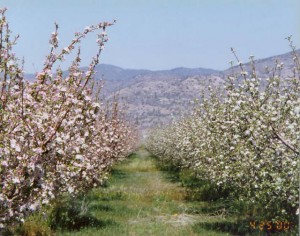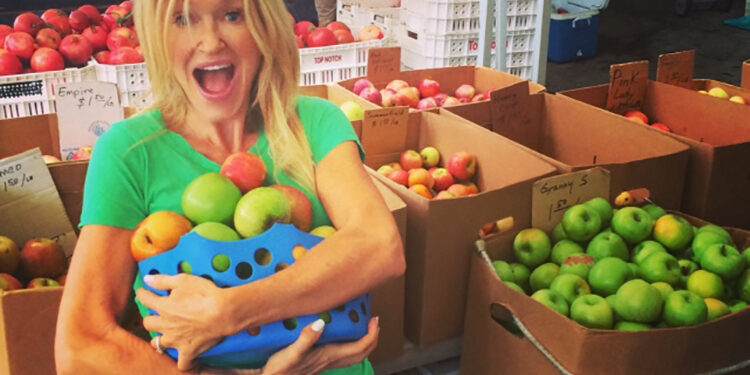 I have been deeply involved in apples this week! With my local farmers market boasting at least 3 stalls full of organic apples, I was eager to not only explore the different organic varieties on offer, but to also experiment with what I can do with them all!
I have been deeply involved in apples this week! With my local farmers market boasting at least 3 stalls full of organic apples, I was eager to not only explore the different organic varieties on offer, but to also experiment with what I can do with them all!
I was lucky enough to chance upon Ha’s Apple farm – lucky because Ha grows well over 20 different apple varieties – many of which I had never heard of. I chatted to his wife who explained to me that their farm is in Tehachapi, CA, and the apples trees are all situated at an elevation of over 4000 ft. These colder conditions make for really tasty, sweet apples – which all of the one’s I tasted most definitely were.
What’s the mega difference between a conventionally grown apple and an organic one? The first  thing is the size of the apple. Ha has a huge box of Red Delicious Apples – I picked one up and it was tiny compared to the ones that you see in the grocery store. When I bit into it, the flavor exploded in my mouth. I’ve always disliked Red Delicious apples because they taste so bland and watery, but not this tiny bite of paradise – not at all! Here’s the deal. The pesticides that are used to grow conventional apples make the fruit retain water, so what you get is an apple swollen with water instead of nutrients and taste. In summation – the 3 differences between an organic and conventional apple are:
thing is the size of the apple. Ha has a huge box of Red Delicious Apples – I picked one up and it was tiny compared to the ones that you see in the grocery store. When I bit into it, the flavor exploded in my mouth. I’ve always disliked Red Delicious apples because they taste so bland and watery, but not this tiny bite of paradise – not at all! Here’s the deal. The pesticides that are used to grow conventional apples make the fruit retain water, so what you get is an apple swollen with water instead of nutrients and taste. In summation – the 3 differences between an organic and conventional apple are:
1. The size
2. The taste
3. The nutrient value
oh and least I forget – you’re not consuming a snack containing pesticide residue either. Here’s the thing – some people think that they can peel a conventional apple and get rid of the pesticides that way. But don’t forget that the apple has been sprayed multiple times through it’s growing cycle, and more importantly, we are supposed to eat the peel! The peel contains 80% of the nutrients.
Which apple varieties are best? It’s all about your personal taste, and what you are going to use them for. While Fuji apples are great for eating, Granny Smiths and Pippin apples are better for baking. Small tart apples like crab apples are best for cider, especially when combined with a sweet apple such as a Golden Delicious or Fuji.
Try to eat as many apples with red in their skin as possible because it means they contain heart healthy anthocyanins, which are very high in polyphenols, and are really important for healthy cholesterol and heart pressure levels.
So, I came away with baskets of apples, and now I’m going to spend the next week or so dreaming up all kinds of yummy recipes. But I did get a head start by making a huge batch of Apple Butter. It made my whole home smell like Thanksgiving and Christmas wrapped into one, and OMG – it’s SO delicious.
For all my latest updates, recipes, tips and more, please make sure you are subscribed to my weekly newsletter.




